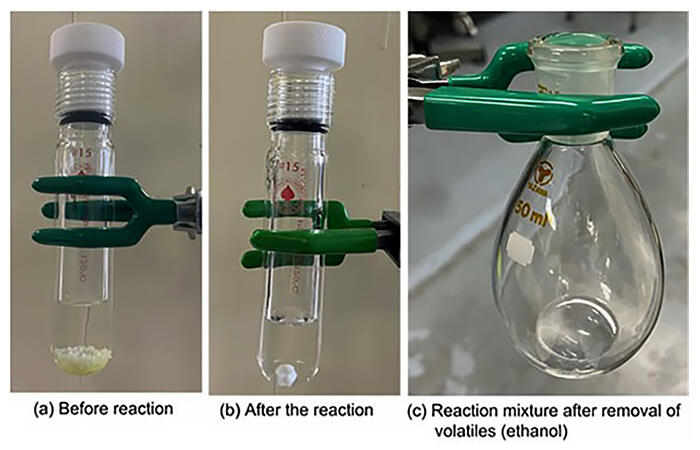A research group led by Professor Kotohiro Nomura of the Graduate School of Science, Tokyo Metropolitan University, has developed two types of high-performance catalysts (calcium oxide catalyst and titanium catalyst) that completely break down polyesters and vegetable oils into raw materials simply by mixing and heating alcohol. Their finding is expected to stimulate research on the rapidly developing field of chemical recycling and the conversion of plastic waste into value-added chemicals using high-performance catalysts. The result was published in the online edition of ACS Sustainable Chemistry & Engineering.

Provided by Tokyo Metropolitan University (© Kotohiro Nomura)
Most plastic waste is reused as fuel, and the percentage of chemical recycling in which plastic waste is reused as a raw material is miniscule. Polyesters used in plastic bottles and clothing have a repeating ester bond structure resulting from the reaction of a carboxylic acid with alcohol, and although these ester bonds can be converted to raw materials by completely cleaving them, the conventional method requires the use of excessive acids and bases at high temperatures.
The research group has worked to develop catalysts that enable the synthesis of high value-added chemicals (fine chemicals) such as raw materials for detergents, cosmetics and polymers from inedible vegetable oils, and found two types of high-performance catalysts (calcium oxide catalyst and titanium catalyst). Furthermore, they learned this catalyst is also effective in breaking down polyesters, which is the same chemical reaction (transesterification) and can be converted to feedstock with almost 100% selectivity.
Both catalysts are characterized by their ability to react with various polyesters and alcohols. In particular, the activity of the titanium catalyst found in the search for a catalyst for the transesterification of vegetable oil is approximately 50 to 100 times higher than that of the calcium oxide catalyst and can be used with various ester compounds, polyesters, and alcohols for ester exchange, giving it a wide range of applications.
Calcium oxide is readily available, inexpensive and has a proven track record of industrial use, allowing polyesters to be converted to raw materials at nearly 100% selectivity. There has been no research on the application of a catalyst for vegetable oil ester exchange directly to a polyester cracking catalyst, as in this case, and it is expected to be developed into a low-cost and environmentally friendly process. The titanium catalyst, which has excellent catalytic performance, has a wide range of applications, and its effectiveness was confirmed for various polyesters such as polyethylene terephthalate (PET), polybutylene terephthalate (PBT) and polycaprolactone (PCL). It is also expected to be used to synthesize polymer raw materials and various fine chemicals from vegetable oil and upcycle plastic waste into value-added chemicals.
Journal Information
Publication: ACS Sustainable Chemistry & Engineering
Title: Transesterification of Methyl-10-undecenoate and Poly(ethylene adipate) Catalyzed by (Cyclopentadienyl)titanium Trichlorides as Model Chemical Conversions of Plant Oils and Acid-, Base-Free Chemical Recycling of Aliphatic Polyesters
DOI: 10.1021/acssuschemeng.2c04877
This article has been translated by JST with permission from The Science News Ltd.(https://sci-news.co.jp/). Unauthorized reproduction of the article and photographs is prohibited.




